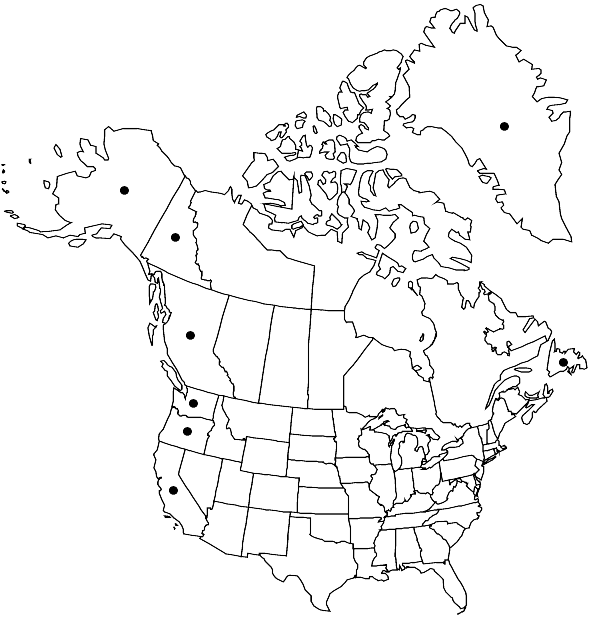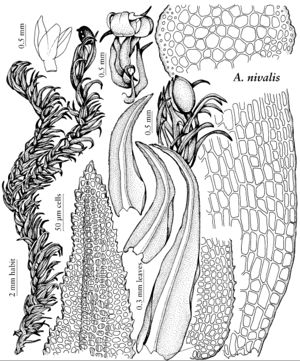Andreaea nivalis
Trans. Linn. Soc. London 10: 395, plate 31, fig. 4. 1811,.
Plants reddish brown to brownish green. Leaves secund to falcate-secund, mostly subulate, widest in proximal half of leaf, apex symmetric; costa present, percurrent and filling the leaf apices, strong, terete, reaching the leaf insertion; leaf margins crenulate to strongly denticulate; basal and medial laminal cells quadrate to short-rectangular, 1-stratose, walls thin and straight, lumens smoothly rounded, quadrate to short-rectangular on the margins; laminal papillae strong, usually distant. Sexual condition dioicous; perichaetial leaves not differentiated beyond being larger than the cauline. Spores (18–)20–30(–40) µm.
Habitat: Wet rocks in streams, snow flushes, seeping outcrops
Elevation: moderate to high elevations
Distribution

Greenland, B.C., Nfld. and Labr. (Nfld.), Yukon, Alaska, Calif., Oreg., Wash., Europe, Asia (Japan, Russia).
Discussion
The salient distinguishing traits of Andreaea nivalis are the crenulate to strongly denticulate leaf margins, strong papillae occurring mostly on the abaxial surface of the lamina, and perichaetial leaves larger, more sharply cordate at the basal angles, but otherwise not much different from the cauline leaves.
Selected References
None.
